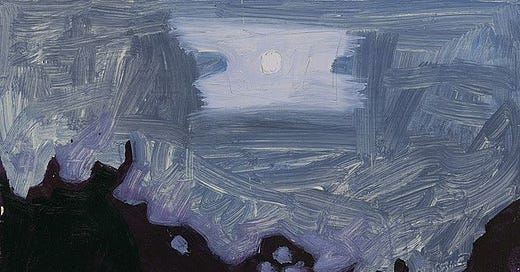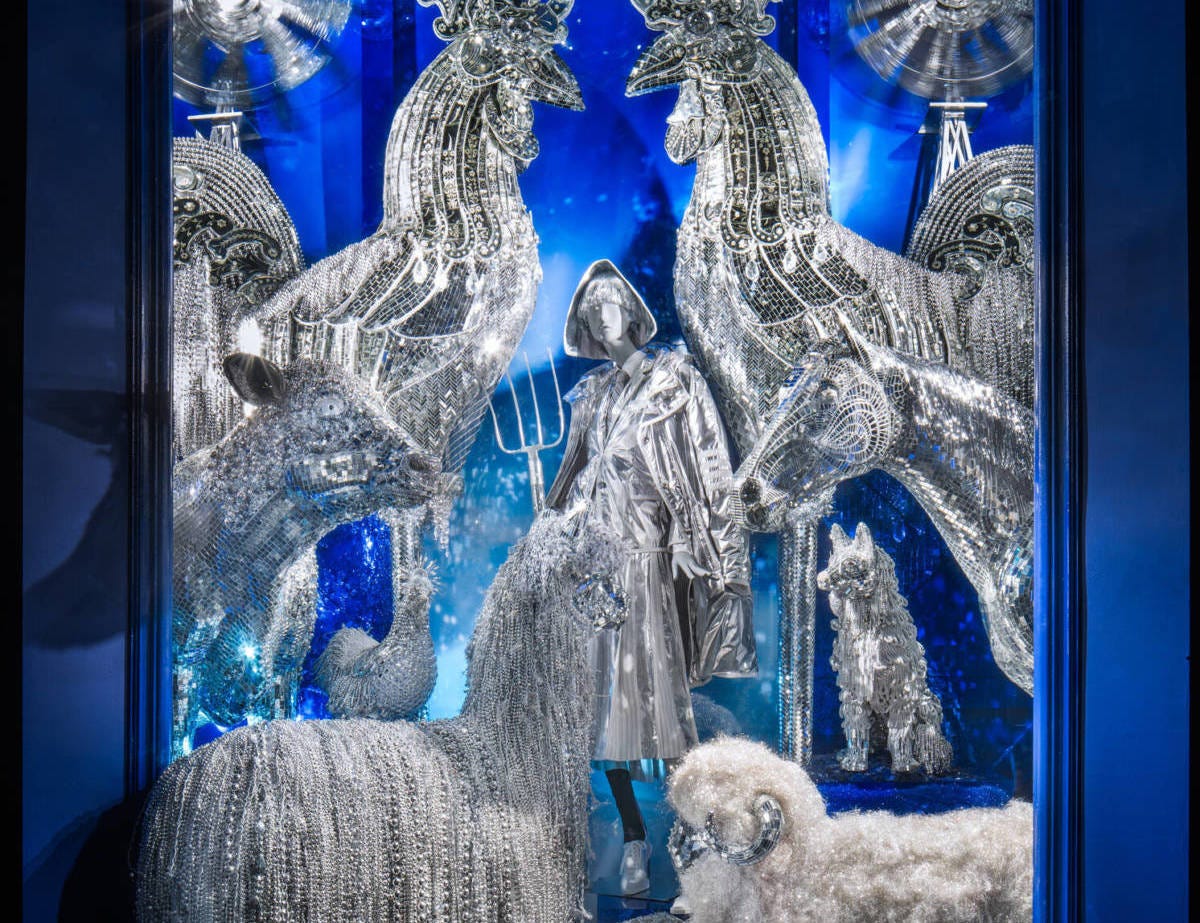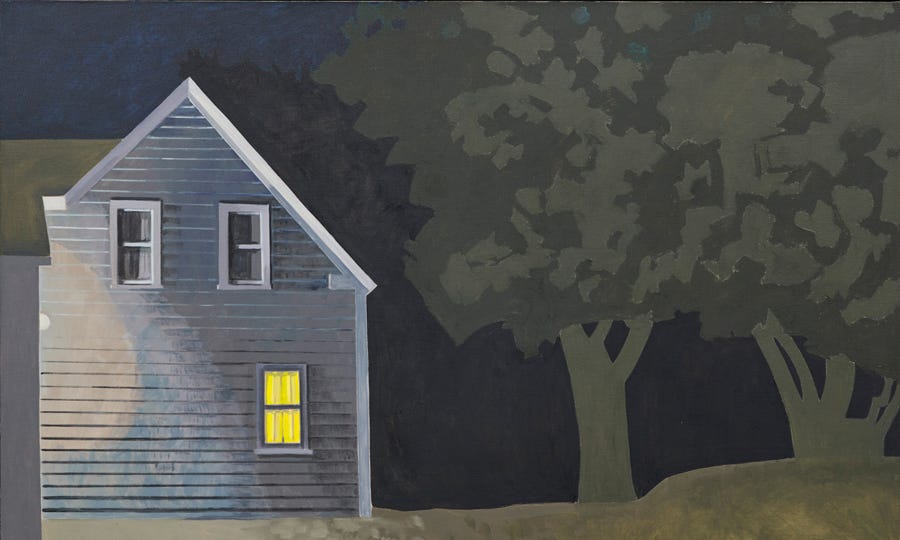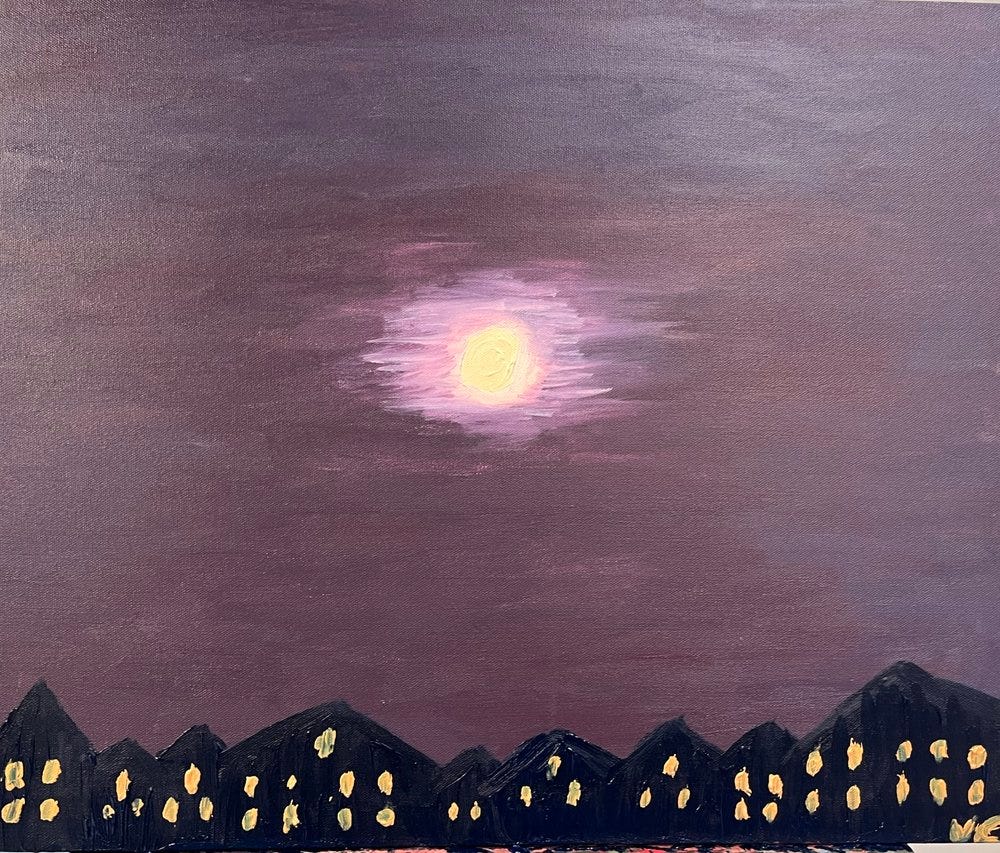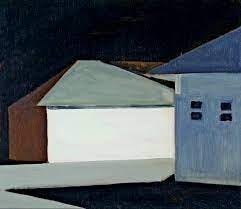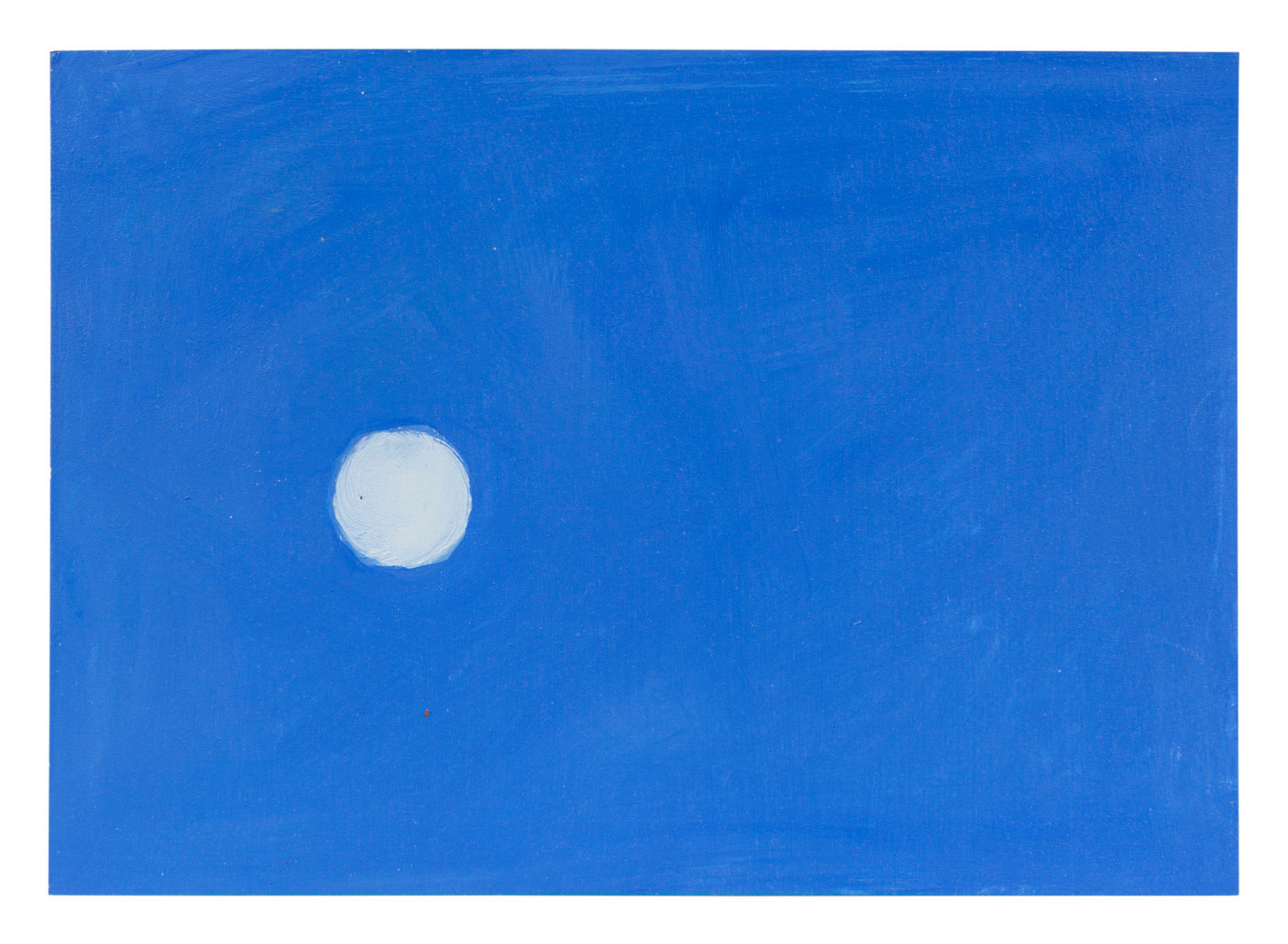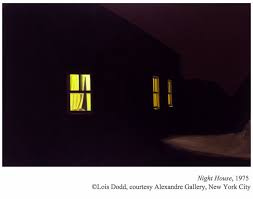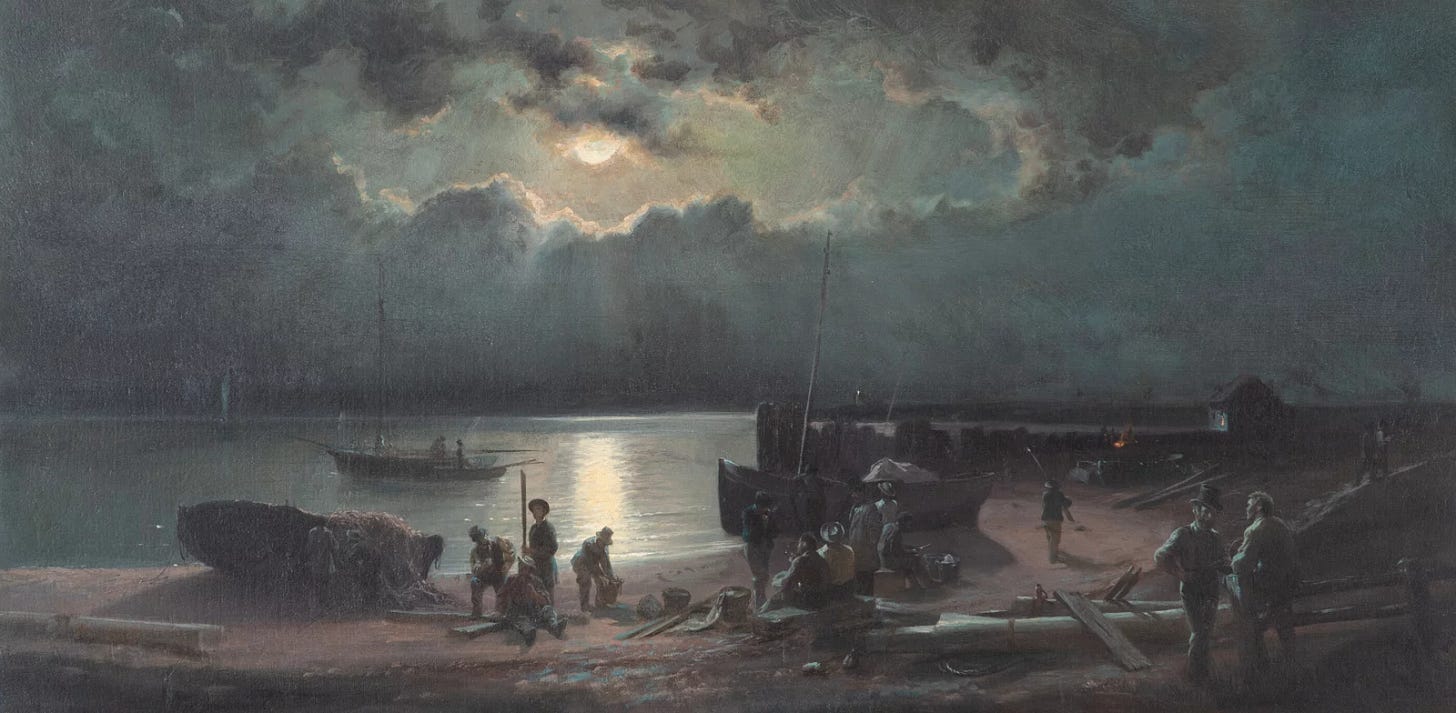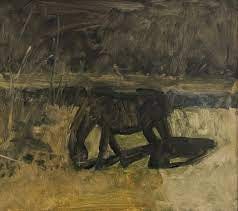Thanksgiving morning and I have nothing to do. We’re not hosting this year, not traveling to visit family. We have lunch reservations in Manhattan later, then we’ll walk around looking at the famous store windows, have some hot chocolate at Bryant Park (and skating, please!), and then a movie. Just the four of us. I can’t wait.
But because I woke up with no cooking obligations, no kids to get out the door, and no work emails to address I’m sitting in the dark in my Brooklyn apartment watching YouTube videos.
I love YouTube so much, despite all the awful people using it to warehouse their disturbing madness. Because it is a huge, priceless, limitless treasure trove of art stuff. Lectures, conversations, studio visits, behind the scenes. I could waste entire days listening to the wisdom of great painters and the curators who help us understand their greatness.
Sky Through Trees, Lois Dodd
If you have no cooking obligations today you might consider watching this particular bit of YouTube content, a conversation about nocturne painting with painter Lois Dodd about the “challenge of painting the night” in response to a show at Bowdoin College called, “Night Vision: Nocturnes in American Art”.
If you don’t know what a nocturne painting is, it is a painting of a scene lit by moonlight or candlelight rather than sunlight or direct light. And Lois Dodd has painted a zillion of them.
Lois Dodd, Night House with Lit Window, 2012
And when done well nocturnes are a portal into a dream state, a mood, another kind of art experience. I have often done nocturne painting classes to great success (the last time I did it half the class cried while explaining their works. I mean, if that is success!) and I have created an entire video about nocturne painting here.
In the Bowdoin College video Dodd gives a masterclass in nocturne painting. (She paints so many nocturnes and moon-centric pieces that she keeps a post of the moon phases over her work table for reference)
“There is no color at night,” Dodd tells us, referring to the fact that our eyes function differently at night than they do in the day. When we lose light the rods take over from the cones and everything moves into the blue-green realm.
Today there are artists and there are painters. They are two different things and you ought to understand that before you get into it. Artists are not limited to paint, the way painters are. - Dodd
We learn in the video that to deal with that shift that she fills her palette with ultramarine blue, raw umber, and multiple blacks, many of them she has mixed herself.
Lois Dodd, Moon at Dusk
Lois, Dodd, Moon in Cloud
“The big decision is where do you put the circle on this thing? After you’ve done that…” Dodd joked about the many moon paintings she creates.
She talks about who inspires her in painting these moonlit scenes: “What can I learn from (Albert) Bierstadt? How is he doing this? It is a beautiful painting and I am looking at it as a resource for how to do things as well.”
Albert Bierstadt Moonlit Waterfront Landscape
Lois Dodd, Night Horse
And about her outdoor experiences winding up on canvas, “There are some startling things that you actually see.” There are some very startling things in the night, which is why I cried every time I had to sleep alone in our cabin in the woods.
Dodd talks about how you decide what to paint and if what you paint even matters: “One time in Louisiana I decided to make a painting and we arrived at night and there were all these lights lined up and I had no idea what I was looking at until the next day - it was somebody’s boat pulled up with all these lights.”
She goes on, “It doesn’t really matter. Content is content, but it’s not part of the painting problem.” Not part of the painting problem? That leads me to believe that Dodd defines the painting problem as determining how to capture shapes and form, light and shadow, color and value, not content.
And if you get nothing else out of this video consider what a lifetime of focusing on a small area of the world and a narrow area of focus like Maine and moons, windows and trees can produce.
“These things seem to be building on one another over the years in a way that is not planned but I certainly see.”
I hope you have a great day today, whether you are stuffing a bird, ice skating, or binging on YouTube. xo
Sara

